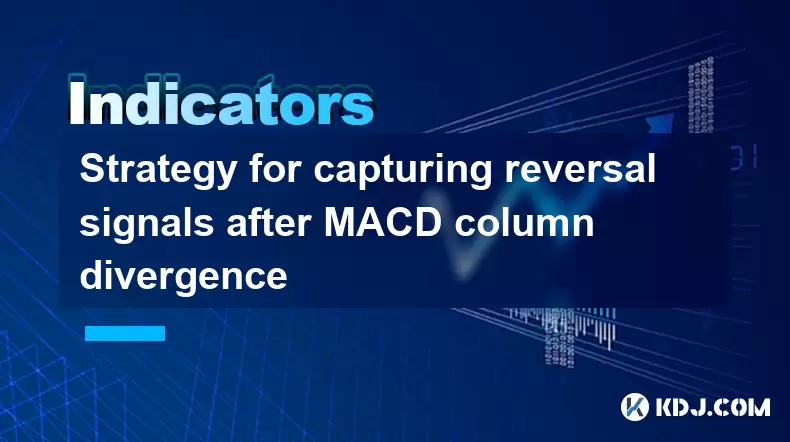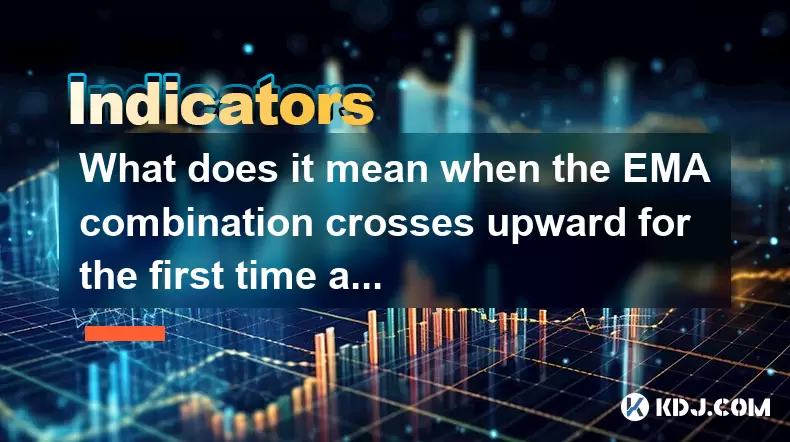-
 Bitcoin
Bitcoin $118600
0.36% -
 Ethereum
Ethereum $3855
1.06% -
 XRP
XRP $3.195
-0.09% -
 Tether USDt
Tether USDt $1.000
-0.04% -
 BNB
BNB $844.5
6.23% -
 Solana
Solana $191.3
2.83% -
 USDC
USDC $0.9997
-0.01% -
 Dogecoin
Dogecoin $0.2376
0.10% -
 TRON
TRON $0.3242
0.83% -
 Cardano
Cardano $0.8222
0.13% -
 Hyperliquid
Hyperliquid $45.26
6.53% -
 Sui
Sui $4.200
-2.56% -
 Stellar
Stellar $0.4336
-1.24% -
 Chainlink
Chainlink $18.86
0.28% -
 Hedera
Hedera $0.2796
-1.75% -
 Bitcoin Cash
Bitcoin Cash $583.3
-1.84% -
 Avalanche
Avalanche $27.06
8.09% -
 Litecoin
Litecoin $112.3
-1.16% -
 Toncoin
Toncoin $3.353
0.58% -
 UNUS SED LEO
UNUS SED LEO $8.968
-0.11% -
 Shiba Inu
Shiba Inu $0.00001395
-0.54% -
 Ethena USDe
Ethena USDe $1.001
-0.03% -
 Uniswap
Uniswap $10.76
0.69% -
 Polkadot
Polkadot $4.175
0.26% -
 Monero
Monero $326.7
1.07% -
 Bitget Token
Bitget Token $4.665
1.61% -
 Dai
Dai $0.9998
-0.02% -
 Pepe
Pepe $0.00001271
0.32% -
 Cronos
Cronos $0.1416
2.01% -
 Aave
Aave $299.3
1.15%
Strategy for capturing reversal signals after MACD column divergence
MACD column divergence signals potential reversals when price and momentum mismatch—use volume, RSI, and price structure to confirm high-probability setups.
Jul 28, 2025 at 01:01 pm

Understanding MACD Column Divergence
The MACD (Moving Average Convergence Divergence) indicator is one of the most widely used tools in technical analysis for identifying potential trend reversals. The core components of MACD include the MACD line, the signal line, and the MACD histogram (column). The histogram represents the difference between the MACD line and the signal line. When traders refer to "MACD column divergence," they are observing a mismatch between price action and the momentum reflected by the histogram.
A bearish divergence occurs when the price makes a higher high, but the MACD histogram forms a lower high. Conversely, a bullish divergence happens when the price records a lower low, yet the histogram prints a higher low. These divergences suggest that momentum is weakening, even if the price continues in the same direction. This weakening momentum often precedes a reversal, making it a critical signal for proactive traders.
It is essential to distinguish between regular divergence and hidden divergence. Regular divergence signals potential trend reversals, while hidden divergence typically indicates trend continuation. For reversal strategies, regular divergence is the primary focus. Traders should ensure the divergence is clearly visible across at least two swing points on both price and histogram.
Confirming Divergence with Price Structure
Before acting on a divergence signal, traders must validate the setup using price structure analysis. A valid bullish divergence requires the price to form two consecutive lower lows, while the MACD histogram forms higher lows. Similarly, bearish divergence needs two higher highs in price with lower highs in the histogram.
To avoid false signals, use support and resistance levels as confirmation tools. If a bullish divergence appears near a well-established support zone, the probability of a successful reversal increases. Likewise, bearish divergence occurring near a resistance level strengthens the signal. Traders should also examine candlestick patterns such as pin bars, engulfing patterns, or inside bars at the divergence point for additional confirmation.
Another critical aspect is timeframe alignment. A divergence on the 1-hour chart gains more significance if it aligns with a similar signal on the 4-hour or daily chart. Multi-timeframe confirmation reduces noise and enhances the reliability of the signal. Use horizontal lines to mark the swing highs and lows on both price and histogram for precise visual comparison.
Entry Triggers Based on Histogram Reversal
Once divergence is confirmed, the next step is to identify a precise entry trigger. The most reliable trigger occurs when the MACD histogram begins to expand in the direction of the expected reversal. For a bullish setup, wait for the histogram bars to turn upward after the second higher low. For a bearish setup, enter when the histogram starts declining after the second lower high.
- Monitor the histogram bar immediately following the divergence confirmation
- Enter a long position when the next histogram bar is visibly taller than the previous one in the upward direction
- Enter a short position when the subsequent histogram bar extends further downward
- Avoid entering before the histogram shows directional expansion, as premature entries often result in losses
Some traders prefer to wait for the MACD line to cross above or below the signal line as additional confirmation. However, this may result in delayed entries. A more aggressive but higher-probability method combines histogram expansion with a breakout of a minor trendline drawn across recent price swings.
Setting Stop-Loss and Take-Profit Levels
Risk management is crucial when trading divergence-based reversals. Place the stop-loss just beyond the recent swing point that formed the divergence. For bullish divergence, set the stop-loss below the latest lower low. For bearish divergence, place it above the most recent higher high. This protects the position from invalidation due to continued momentum in the original trend.
Take-profit levels should be based on measured moves or nearby technical levels. One effective method is to measure the distance between the two swing points in price and project it from the breakout point. For example, if the price dropped 200 pips between two lows in a bullish divergence, the take-profit can be set 200 pips above the reversal point.
Alternatively, use Fibonacci extensions or previous support/resistance zones as profit targets. Trailing stops can also be employed to capture extended moves if the reversal evolves into a new trend. Always maintain a minimum risk-reward ratio of 1:2 to ensure long-term profitability.
Filtering False Signals with Volume and RSI
MACD divergence can produce false signals, especially in choppy or low-volatility markets. To increase accuracy, combine the strategy with volume analysis and the Relative Strength Index (RSI). In a valid bullish divergence, look for increasing volume on up candles near the reversal point, indicating growing buyer interest.
RSI can confirm momentum shifts. A bullish MACD divergence accompanied by RSI rising from oversold territory (below 30) adds strength to the setup. Conversely, bearish divergence with RSI dropping from overbought levels (above 70) increases confidence. Avoid trading divergence when RSI remains flat or moves sideways, as it suggests indecision.
- Use volume spikes to confirm breakout attempts after divergence
- Confirm RSI is exiting oversold/overbought zones in the reversal direction
- Reject setups where RSI and MACD give conflicting signals
- Consider market context—avoid trading divergence during major news events
Practical Example on a Cryptocurrency Chart
Consider Bitcoin (BTC/USDT) on the 4-hour chart. Suppose BTC drops from $45,000 to $40,000, then rebounds to $43,000, followed by a second drop to $39,500. Price made a lower low, but the MACD histogram formed a higher low—indicating bullish divergence.
At this point, draw a horizontal line connecting the two histogram lows and observe the next bar. When the subsequent histogram bar extends upward noticeably, it confirms momentum shift. Enter a long position at the close of that candle. Place the stop-loss at $39,000 (below the second low) and set the take-profit at $43,500, matching the prior swing high.
During this move, volume increased on up candles, and RSI rose from 28 to 55, confirming bullish momentum. The combination of MACD histogram divergence, volume confirmation, and RSI alignment created a high-probability reversal trade.
Frequently Asked Questions
What timeframes work best for spotting MACD column divergence?
The 1-hour, 4-hour, and daily charts are most effective. Shorter timeframes like 5-minute or 15-minute generate too many false signals, while higher timeframes provide clearer, more reliable divergence patterns.
Can MACD divergence be used in ranging markets?
Yes, but with caution. In sideways markets, divergence may signal short-term bounces rather than trend reversals. Always combine with horizontal support/resistance levels to define the range boundaries.
How do I adjust MACD settings for better divergence detection?
The default settings (12, 26, 9) work well for most cases. For faster signals, try (8, 17, 9). For slower, more reliable signals, use (12, 26, 13). Backtest any changes on historical data before live trading.
Is MACD divergence effective in all cryptocurrencies?
It works best in high-liquidity pairs like BTC/USDT or ETH/USDT. Low-cap altcoins with erratic price action often produce unreliable divergence signals due to low volume and manipulation risks.
Disclaimer:info@kdj.com
The information provided is not trading advice. kdj.com does not assume any responsibility for any investments made based on the information provided in this article. Cryptocurrencies are highly volatile and it is highly recommended that you invest with caution after thorough research!
If you believe that the content used on this website infringes your copyright, please contact us immediately (info@kdj.com) and we will delete it promptly.
- Pepe Dollar vs. Bitcoin HYPER: The Crypto Supercycle Meme Showdown
- 2025-07-29 01:10:12
- BlockDAG, BNB, DOGE: The New York Minute on 2025's Crypto Frontrunners
- 2025-07-29 01:50:12
- AVAX, Solana, and the AI Token Surge: What's Hot and What's Not
- 2025-07-29 01:50:12
- XRP Price Surge Potential: Chart Analysis and What's Next
- 2025-07-29 01:55:48
- Crypto Investments, Dogecoin Substitutes, and Wealthy Returns: Navigating the Meme Coin Mania and Beyond
- 2025-07-29 00:30:13
- Iron Age Treasures: Coins and Brooches in the Test Valley
- 2025-07-29 01:55:48
Related knowledge

What does it mean when the EMA combination crosses upward for the first time after sideways trading?
Jul 28,2025 at 03:43pm
Understanding the EMA and Its Role in Technical AnalysisThe Exponential Moving Average (EMA) is a widely used technical indicator in cryptocurrency tr...

What signal does the ROC send when it rises rapidly from a low level and breaks through the zero axis?
Jul 27,2025 at 10:15am
Understanding the Rate of Change (ROC) IndicatorThe Rate of Change (ROC) is a momentum-based oscillator used in technical analysis to measure the perc...

What does it mean when the price breaks through the double bottom neckline and the moving averages are arranged in a bullish pattern?
Jul 28,2025 at 10:57am
Understanding the Double Bottom PatternThe double bottom is a widely recognized reversal chart pattern in technical analysis, particularly within the ...

What signal does the DMA fast line cross the slow line above the zero axis?
Jul 28,2025 at 05:42am
Understanding the DMA Indicator and Its ComponentsThe DMA (Difference of Moving Averages) indicator is a technical analysis tool used in cryptocurrenc...

What does it mean that the rebound is blocked after the moving average is arranged in a short position for the first time?
Jul 26,2025 at 10:51am
Understanding the Short-Term Moving Average ConfigurationWhen traders refer to a 'short position arrangement' in moving averages, they are describing ...

What does it mean that the ZIGZAG low point is raised and the high point breaks through the previous peak?
Jul 28,2025 at 03:28am
Understanding the ZIGZAG Indicator in Cryptocurrency TradingThe ZIGZAG indicator is a technical analysis tool widely used in cryptocurrency trading to...

What does it mean when the EMA combination crosses upward for the first time after sideways trading?
Jul 28,2025 at 03:43pm
Understanding the EMA and Its Role in Technical AnalysisThe Exponential Moving Average (EMA) is a widely used technical indicator in cryptocurrency tr...

What signal does the ROC send when it rises rapidly from a low level and breaks through the zero axis?
Jul 27,2025 at 10:15am
Understanding the Rate of Change (ROC) IndicatorThe Rate of Change (ROC) is a momentum-based oscillator used in technical analysis to measure the perc...

What does it mean when the price breaks through the double bottom neckline and the moving averages are arranged in a bullish pattern?
Jul 28,2025 at 10:57am
Understanding the Double Bottom PatternThe double bottom is a widely recognized reversal chart pattern in technical analysis, particularly within the ...

What signal does the DMA fast line cross the slow line above the zero axis?
Jul 28,2025 at 05:42am
Understanding the DMA Indicator and Its ComponentsThe DMA (Difference of Moving Averages) indicator is a technical analysis tool used in cryptocurrenc...

What does it mean that the rebound is blocked after the moving average is arranged in a short position for the first time?
Jul 26,2025 at 10:51am
Understanding the Short-Term Moving Average ConfigurationWhen traders refer to a 'short position arrangement' in moving averages, they are describing ...

What does it mean that the ZIGZAG low point is raised and the high point breaks through the previous peak?
Jul 28,2025 at 03:28am
Understanding the ZIGZAG Indicator in Cryptocurrency TradingThe ZIGZAG indicator is a technical analysis tool widely used in cryptocurrency trading to...
See all articles

























































































